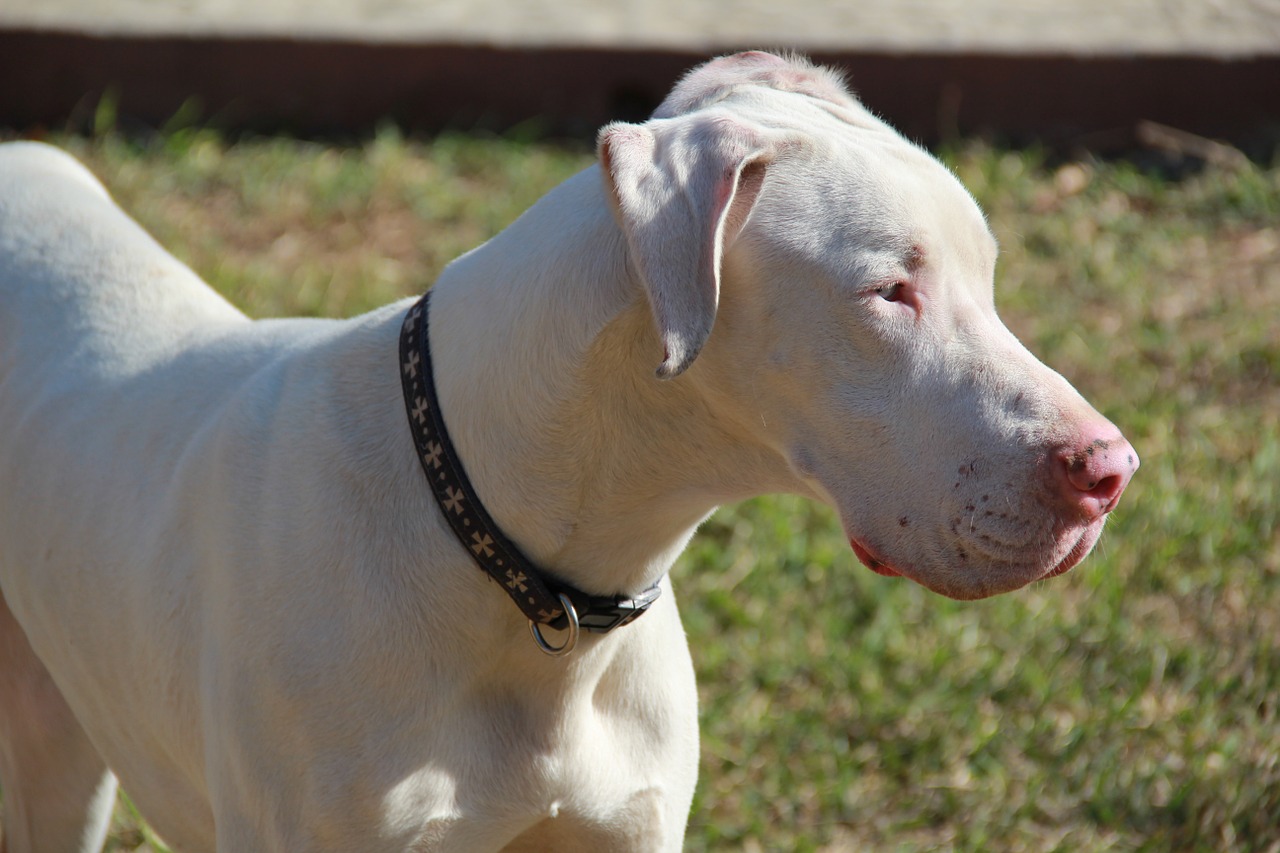While most dogs experience some degree of hearing loss during their lifetime, deafness does not have to mean a decreased quality of life—for you or your dog! Learn the signs of hearing loss in dogs and how to manage deafness at home here.
What is deafness?
Deafness refers to a complete or partial loss of hearing. This loss can be temporary or permanent and it may affect one or both ears. Temporary or transient deafness is most often due to buildup of wax or debris in the ear canals, while permanent deafness can have a number of causes, including untreated ear infections, injury, drug toxicity, tumors, congenital (birth) defects and old age.

What are the symptoms of deafness in dogs?
A dog with significant hearing loss may:
- Show a change in obedience or attentiveness
- Appear unresponsive to everyday sounds, such as the doorbell or vacuum
- Appear unresponsive to his/her name
- Fail to respond to familiar verbal commands
- Be difficult to rouse from sleep
- Be less active
- Bark excessively
- Shake or tilt his/her head
What are the causes of deafness in dogs?
Deafness may be caused by a number of factors, including congenital defects, chronic ear infections, head injuries, drug toxicity, degenerative nerve changes, old age or disease, such as a tumor or ruptured ear drum.
Certain breeds - including Dalmatians, English setters, Australian shepherds and Jack Russell terriers - are prone to congenital deafness. Early onset deafness, especially in predisposed breeds, typically suggests congenital causes and is usually irreversible.
While we are not quite sure what causes this condition, we do know there is a connection between congenital deafness and coat color. Dogs with predominantly white or merle coats may be at increased risk for congenital deafness.
Senile deafness develops gradually, typically occurring at about 13 years of age. Many older dogs lose their hearing but never become completely deaf; however, the loss that has already occurred is permanent.
Temporary deafness is often the result of buildup within the ear canals. In addition to wax buildup, some dogs may have excess hair in or around their ears. This hair can collect wax and debris and form a plug in the canal, leading to hearing loss. This type of deafness may be reversed with treatment.

How will I know if my dog is deaf?
If your dog has any of the above symptoms, you may suspect him/her of being deaf. But how can you know for sure?
First, a complete veterinary exam is needed. After examining your dog’s ear canal for any abnormalities, including wax or debris, infection, inflammation and injury, your veterinarian may perform a simple hearing test, such as stepping quietly behind him/her and clapping loudly to check his/her response. If you use this method to test your dog at home, be sure to stand far enough away from your dog, as he/she may be able to feel the vibration of the sound. You may also wait until your dog is asleep to test his/her hearing.
While these tests may give you an idea of your dog’s hearing ability, the most reliable method for determining deafness is the Brainstem Auditory Evoked Response test, or BAER test. Originally developed to test hearing in infants, this test records the electrical activity of the brain in response to sound stimulation.
Living with a deaf dog
Living with deafness may take some time to get used to—usually for the human more than the dog! Dogs who become deaf, especially later in life, typically do not experience any anxiety over their loss of hearing and seem to have very little trouble adapting to their condition. However, some modifications will need to be made to accommodate the deaf dog’s lifestyle.
- Monitor your dog’s activity to avoid injury. Remember that a deaf dog cannot hear traffic or other dangers around him/her. Never let a deaf dog outside on his/her own. Instead, keep your dog on a leash or in a fenced yard when outdoors.
- Train your dog using hand signals. Many deaf dogs can use eyesight to learn visual commands. Not sure where to start? Animal Wellness Magazine has a great crash course on sign language training.
- Visual cues can help get your dog’s attention. Use a flashlight or simply turn a light on or off to alert your dog. Once he/she has made eye contact, follow with a visual command. You may also gain your dog’s attention by using vibrations, such as stomping the ground, or gentle touches to his/her back or shoulders.
- Let your dog know where you are. Some deaf dogs may become anxious if they find their owner is suddenly gone. Inform your dog when you leave or enter the house by tapping him gently on the back.
- Approach carefully. Many deaf dogs are easily startled, especially when sleeping. Wake a deaf dog without startling him/her by placing your hand in front of his/her nose and allowing him/her to smell you. Then, gently touch the dog on his/her back.
- Be prepared. Attach a bell to your dog’s collar so you can hear him/her if he/she becomes lost.
